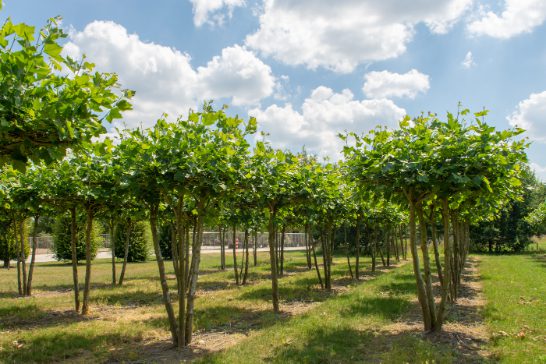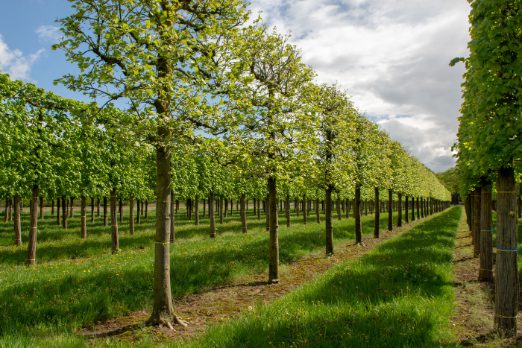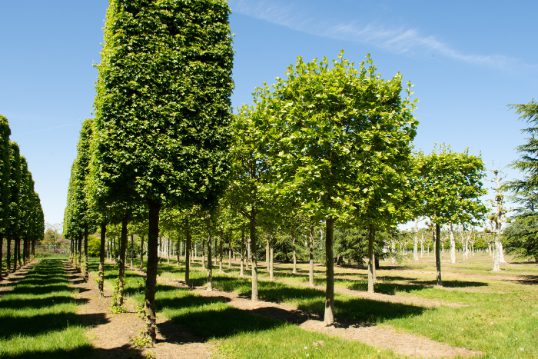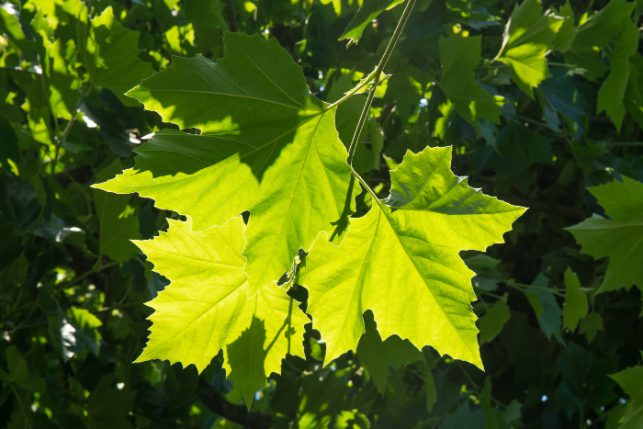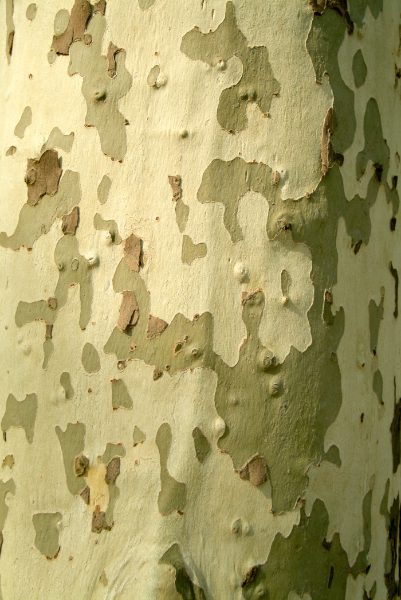Platanus x hispanica | London Plane
The platanus x hispanica is a large, impressive tree that can grow to 35m and live for hundreds of years. It is a cross between the Platanus orientalis and the Platanus occidentalis. First discovered in the 17th century, this tree has been widely planted in streets throughout Europe since the 18th century. Popular due to its tolerance of air pollution and pruning. This tree has very large, palmate leaves with five lobes that turn orange-yellow and brown before falling in autumn. When young, the underside of the leaves are covered in small fine, fibrous hairs that disperse as the leaves mature forming an irritant - especially for asthma sufferers. In spring small ball-like flowers appear that, once pollinated, become spiky burr-like fruits hanging from long stems. These dense clusters of seeds hang on the tree over winter until dispersed by the wind. Left to grow naturally, the Platanus x hispanica has a broadly pyramidal shaped crown and will make an impressive statement. However, they respond well to heavy pruning and pollarding, and as street trees have a regular maintenance programme. The most significant feature of the Platanus x hispanica is its bark. Olive, green-grey in colour with large scaly plates that peel off to reveal a creamy bark underneath, creating a camouflage look. This characteristic bark-shedding occurs whilst the tree is absorbing small carbon particles of urban pollution. It is resilient to ground compaction, hard-standing surfaces, pollution, drought and heavy pruning all of which makes the Platanus x hispanica ideal for urban environments. The Platanus x hispanica is London's most common tree, hence the name London Plane.
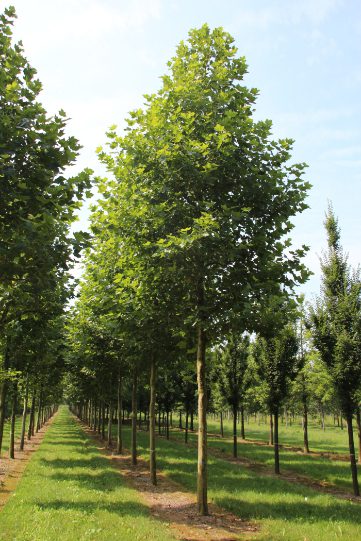
The bark breaks away in large flakes to dispel pollutants, hence the tree’s ability to cope with high levels of air pollution, and the reason for the trunk’s distinctive camouflage pattern. According to the London Tree Report, the London plane tree is one of the most important species in Inner London, making it the largest leaf area of all tree species in Inner London, potentially bringing the most benefits for air quality and shade.

